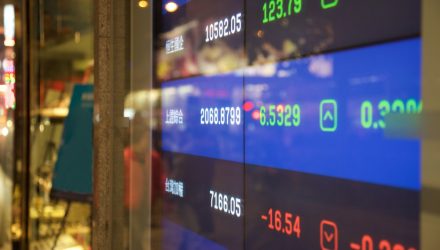ETF Trends CEO Tom Lydon discussed the Invesco Russell 1000 Equal Weight ETF (EQAL) on this week’s “ETF of the Week” podcast with Chuck Jaffe on the MoneyLife Show.
EQAL is a variation on Invesco’s popular equal-weight S&P 500 ETF, taking the 1000 largest U.S. stocks in the Russell index and assigning them equal weight in the portfolio. The result is a sector and size mix that diverges significantly from the traditional index fund. Adherents of equal weighting argue that it eliminates the market-cap bias built into traditional indexes. At the same time, critics say that equal-weighting is just another way of tilting toward smaller companies in a portfolio.
EQAL can be an alternative methodology for investors who are too top-heavy. Equal weighting is arguably one of the first smart beta strategies that takes on a non cap-weighted approach. But does it have a long-term outperforming opportunity?
Critics and even proponents assert that out-performance delivered by equal-weight funds essentially boils down to overweighting the size and value factors. While traditional large-cap, market cap-weighted indexes are heavy on large- and mega-cap stocks, equal weighting benefits from the size factor by tilting toward smaller companies.
In addition to being factor-neutral, equal weighting captures another important stock price behavior — the mean-reversion — in a simple way. As an equal-weight portfolio is often rebalanced periodically, it is, in effect, buying low and selling high, which benefits automatically from the short-term mean-reversion.
Delivering Diversification
Rather than getting bogged down in wonky factor debates, investors may want to focus on one of the primary benefits of equal weighting: It actually delivers the diversification investors think they’re getting with cap-weighted broad market funds.
Think of it this way — a small number of stocks (Apple (NASDAQ: AAPL), Microsoft (NASDAQ: MSFT), Amazon (NASDAQ: AMZN), and friends) are taking on larger and larger percentages of cap-weighted benchmarks, like the S&P 500. The top five holdings in the traditional S&P 500 combine for the same weight in the index as the bottom 370 companies. The top five holdings in the Russell 1000 make up 18% of the overall index. Equal weighting helps even the playing field.
A comparison of U.S. stock market decile portfolios makes a case for equal weighting. The smallest 10% of stocks did much better than the largest 10%, according to data from the Kenneth R. French Data Library. Since this represents the size factor, those familiar with factor investing would hardly find this outcome surprising.
Equal weighting is not infallible. From 2003 through 2006, the equally weighted indexes beat cap-weighted, which followed a two-year win streak by cap-weighted indexes during the market downturn in 2007 and 2008. Equal-weight bounced back during the market rebound in 2009 and 2010, cap-weighted took the lead in 2011, then equal-weight went on another three-year win streak. In 2015, the performance led to cap-weighted, then back to equal-weight in 2016, and cap-weighted won for the past four years.
EQAL’s designation as a mid-cap blend is relevant because 55% of its holdings reside in mid-cap territory. About 22% are small-caps, so EQAL has the potential to benefit from the size factor.
Listen to the full podcast episode on EQAL:
For more podcast episodes featuring Tom Lydon, visit our podcasts category.








